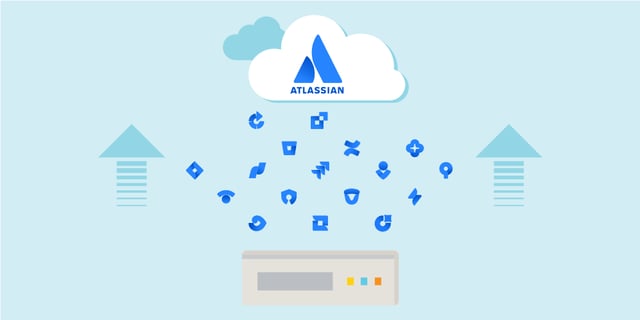The days of Atlassian server instances are over. So if you haven’t done so already, you need to migrate your data to either cloud or Data Center. Atlassian is a cloud-first company, so this blog focuses on cloud.
I have helped numerous companies with cloud migration, and I will now give you a brief overview of what you need to know. I will cover:
- What you need to think about before, during, and after the migration
- The best way to get started
So without further ado, let’s get started.
To think about before migrating
Start in time
Since a cloud migration normally has a timeline between three to six months, it is important that you start in time.
Clean up your server instance
To be able to migrate to cloud as soon as possible, clean up among your projects and issues. Only migrate the active ones, and skip as much of the old legacy as possible.
And while you’re at it, also consider:
- standardizing project scheme configurations
- minimizing the number of custom fields
- cleaning up old and inactive boards, filters, and dashboards
- taking a look at, and validating, the apps if not used
Clean-up activities are essential here. As a system administrator, you should do this continuously together with the users, to keep the instance in good shape.
“So what exactly, then, should I be looking at when I clean up?”, you ask.
Glad you asked.
What to clean up in Jira
- Add-ons
- Integrations
- Custom fields
- Duplicated users
- Users without email addresses
- Groups
- Old projects and issues
- Project scheme configurations
- Boards
- Dashboards
- Filters
What to clean up in Confluence
- Spaces
- Users
- Groups
Other considerations and decisions before migration starts
- Licenses: you will have a different licensing model in the cloud, and also payment method (monthly or yearly).
- Compliance, legal, and security requirements.
- Features to keep, and not to keep, in Atlassian cloud.
- Data residency: where to store your data, in the US or Europe.
- Cloud plan: free, standard, premium, or maybe enterprise, depending on the features and data residency you need.
- Atlassian Access, SSO, SAML, and user provisioning and policies.
- Can you do the migration yourselves or should you consider using an Atlassian Partner?
- Alternatives other than migrating to Atlassian Cloud. There are other alternatives. Your options are:
- Atlassian cloud
- Data Center own hosting
- Data Center Saas hosting
- Eficode hosting your Atlassian environment in Eficode ROOT Managed DevOps Platform
Let’s zoom in on the last consideration above, about whether to move to the cloud or stay on server. There is a good reason why cloud are the obvious choice to many. Here are some factors to keep in mind:
Advantages with Atlassian cloud
- New functionality and features
- Scalability
- Environment plan (free, standard, premium, or enterprise)
- Security and maintenance, and upgrading
- Integrations via REST API: no direct access to the database
Risks of staying on server
- Not consider migration-unintentionally stay on server
- Vulnerabilities
- Cost of server maintenance
- More unstable over time
- No new features or upgrading
Create a plan and set a timeline
Set aside enough time for the testing and migration, and plan for 3-4 months from assessment to go-live.
How to get your migration started
Use the Atlassian migration tools (JCMA for Jira, CCMA for Confluence, and BCMA for Bitbucket), and do several test migrations. Also use a test environment or sandbox, depending on if you select the Standard or Premium cloud plan.
Here are some additional tips to keep in mind when it is time to get started.
- Communicate frequently with the users, to inform them about the status and what is new.
- Set up and claim the production organization/site.
- Set up Atlassian Access if SSO is a requirement.
- Before “go-live”, test. And make a plan for your migration, which will take 1-3 days
To think about after the migration
- Keep communicating with the users
- Education/training on what is new in cloud, and getting to know your new Atlassian product in cloud
- DNS server—if you want to use the same URL as before.
- Hypercare and support—this is also needed after migration (for example, to fix links)
Let’s sum up
Since Atlassian is a cloud-first company, I recommend that you migrate to cloud.
The actual migration will be a lot quicker if you clean up your server instance before the migration. For example, remove old legacy projects, spaces and issues, reduce the number of custom fields, look over your configurations, apps and integrations to other tools. What do you actually need in your organization, and what can you live without?
Published: Apr 27, 2023
Updated: Apr 2, 2025


